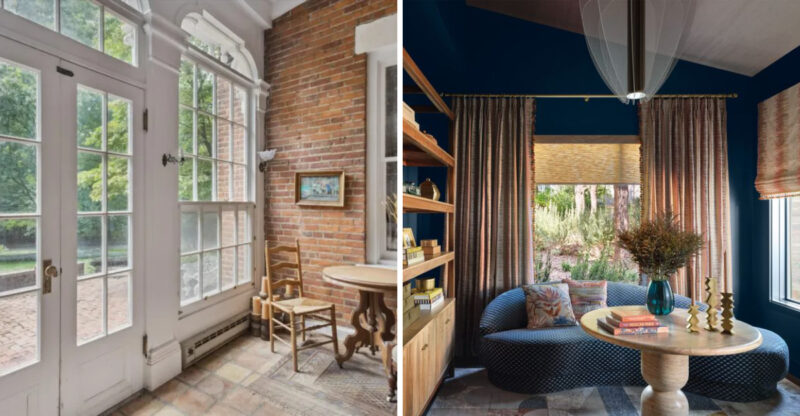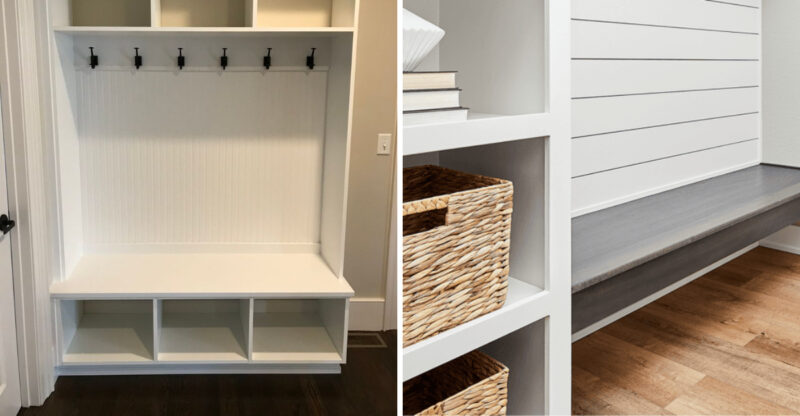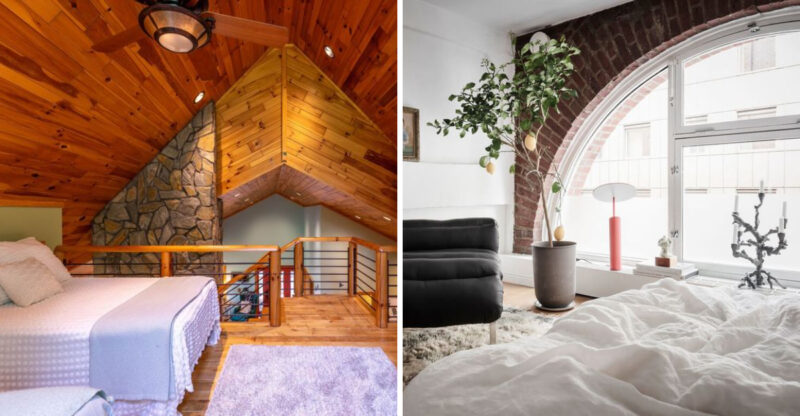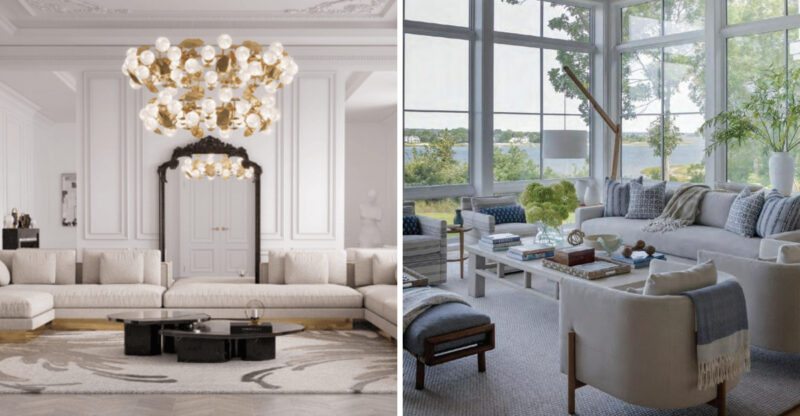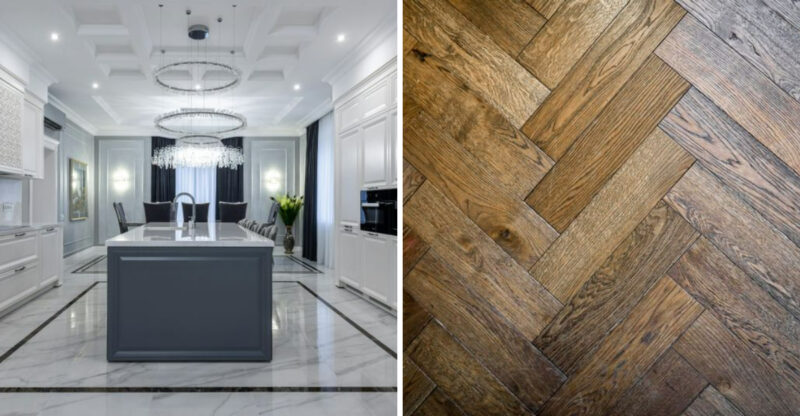Depression-Era Glass 6 Widely Available Designs VS 7 Rare Finds
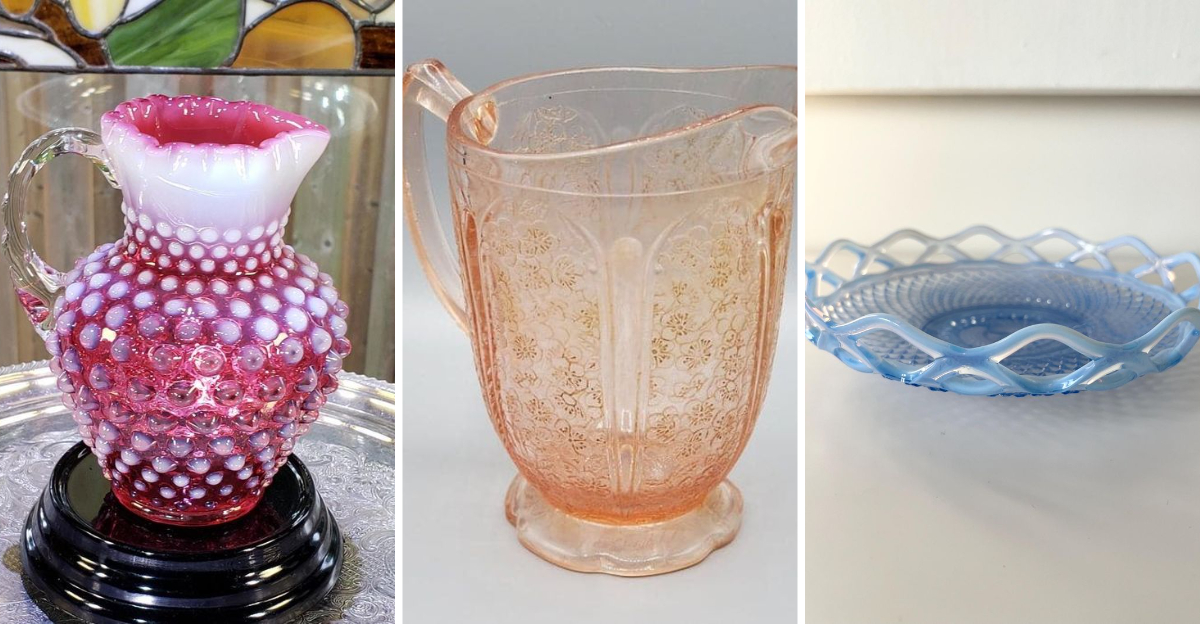
Depression-era glass sparkles with history from America’s toughest economic times.
Made between 1929-1939, these colorful dishes were often given away free with purchases of flour, soap, or movie tickets to entice customers during hard times.
Today, collectors treasure these beautiful pieces for their vibrant colors and unique patterns. Some designs are everywhere at antique shops, while others are nearly impossible to find let’s explore which is which!
1. Pattern 393 – The Everyday Treasure
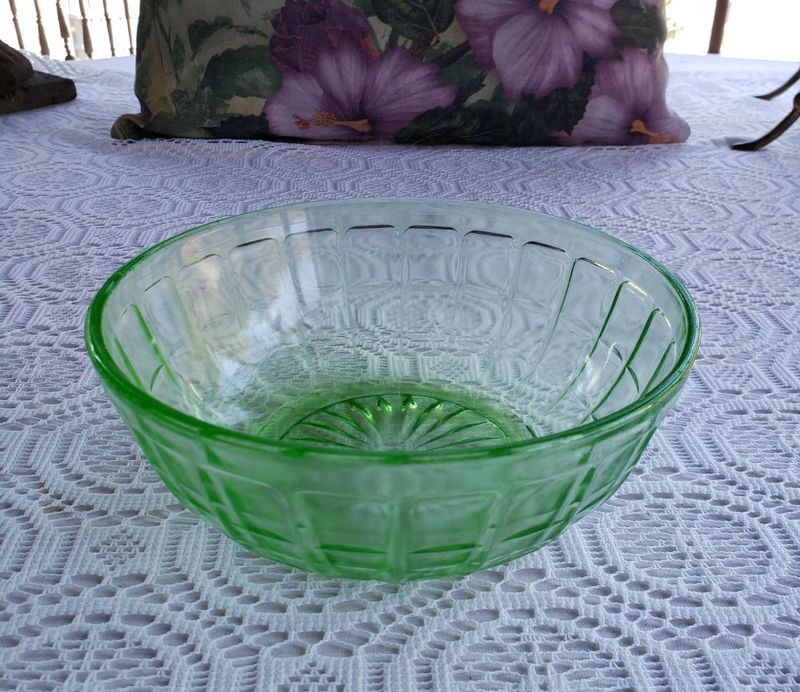
Hazel Atlas created Pattern 393 during the depths of the Depression, and boy did it catch on! The simple, geometric design features diamond shapes and is usually found in that gorgeous seafoam green color that screams 1930s.
You’ll spot this pattern at nearly every antique mall in America because it was produced in massive quantities. Dinner plates typically sell for $5-15 depending on condition, making it perfect for beginning collectors.
Many families actually used these dishes daily, which explains why you’ll find plenty with minor wear. Don’t pass up slightly imperfect pieces those tiny utensil marks tell the story of American families making do during tough times.
2. Cabbage Rose – Pink Glass Favorite

Pink lovers rejoice! Cabbage Rose pattern, with its delicate floral design, remains one of the most accessible depression glass patterns today. Federal Glass Company produced these pieces between 1935-1937, primarily in that signature baby pink color that collectors adore.
I regularly find these pieces at estate sales and online auctions for reasonable prices. Cups and saucers typically range from $15-25, while serving pieces might fetch $40-75 depending on rarity and condition.
The pattern features detailed roses with scrolling vines that catch light beautifully. Despite being mass-produced, each piece has surprising detail hold one up to sunlight and you’ll immediately understand why depression glass collecting became such a passionate hobby!
3. Madrid – The Blue Beauty Everyone Knows
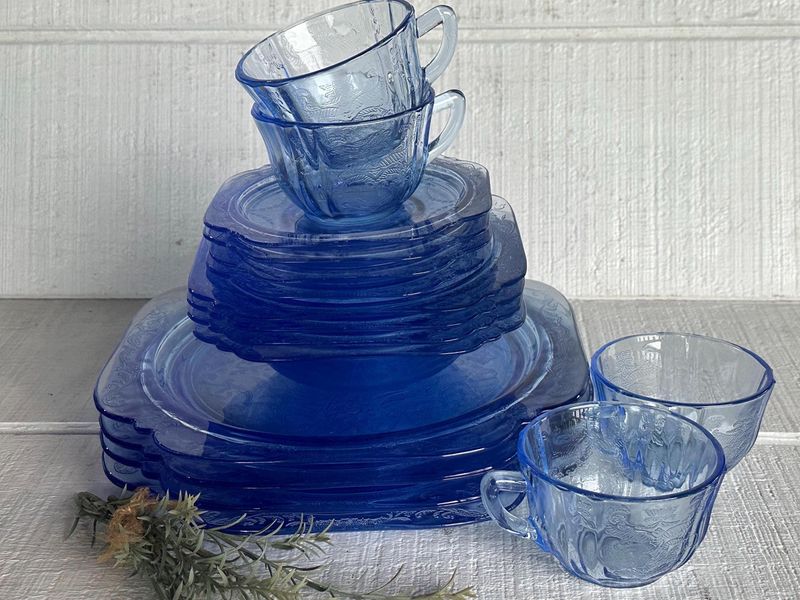
Madrid pattern’s distinctive blue color makes it instantly recognizable even to novice collectors. Federal Glass Company produced this pattern from 1932-1939, and their manufacturing efficiency means we still find plenty today.
Those gorgeous scalloped edges and geometric designs create interesting shadows when displayed near windows. Dinner plates typically sell between $10-20, while harder-to-find pieces like butter dishes might command $45-60.
Did you know Madrid initially came in amber color too? The blue version ultimately proved more popular with consumers. Many families received these pieces as promotional items when buying kitchen staples – imagine getting a beautiful glass plate just for purchasing a bag of flour during such economically challenging times!
4. American Sweetheart – The Pink Monax Wonder
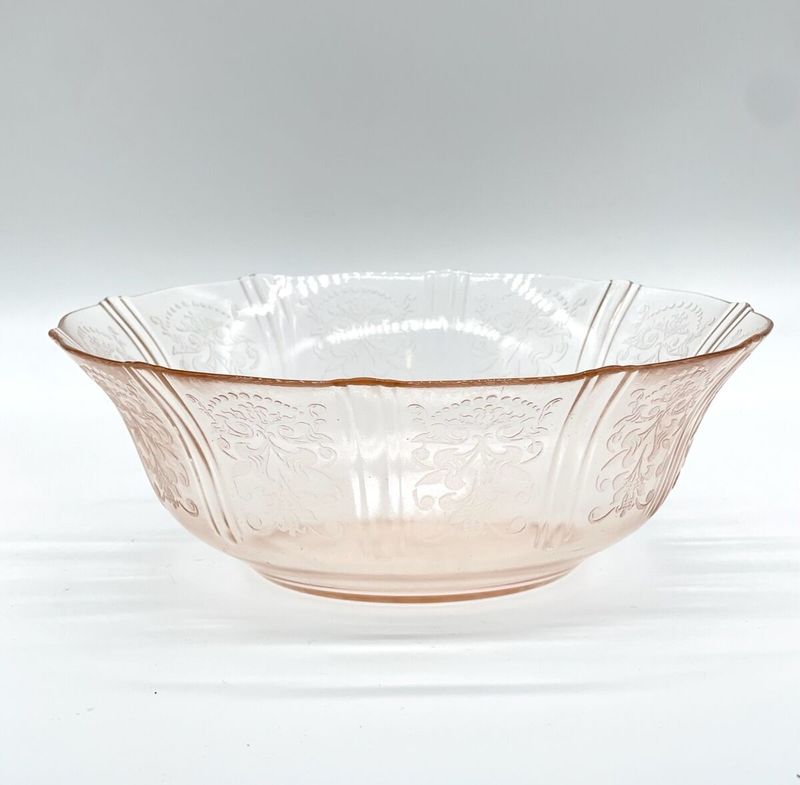
MacBeth-Evans created American Sweetheart using their signature Monax glass a unique milky white with delicate pink tint that makes these pieces glow almost magically in sunlight. The lacy, intricate pattern features scalloped edges and a central floral design that screams 1930s elegance.
You’ll find this pattern regularly at antique shows and online marketplaces. Dinner plates typically range from $20-35, while serving pieces like platters might fetch $50-85.
American Sweetheart production ran from 1930-1936, making it available throughout much of the Depression. Many families received these pieces as grocery store premiums a clever marketing tactic where buying certain amounts of food earned you glassware, bringing beauty into homes during difficult economic times.
5. Moon and Stars – Celestial Pattern That Survived
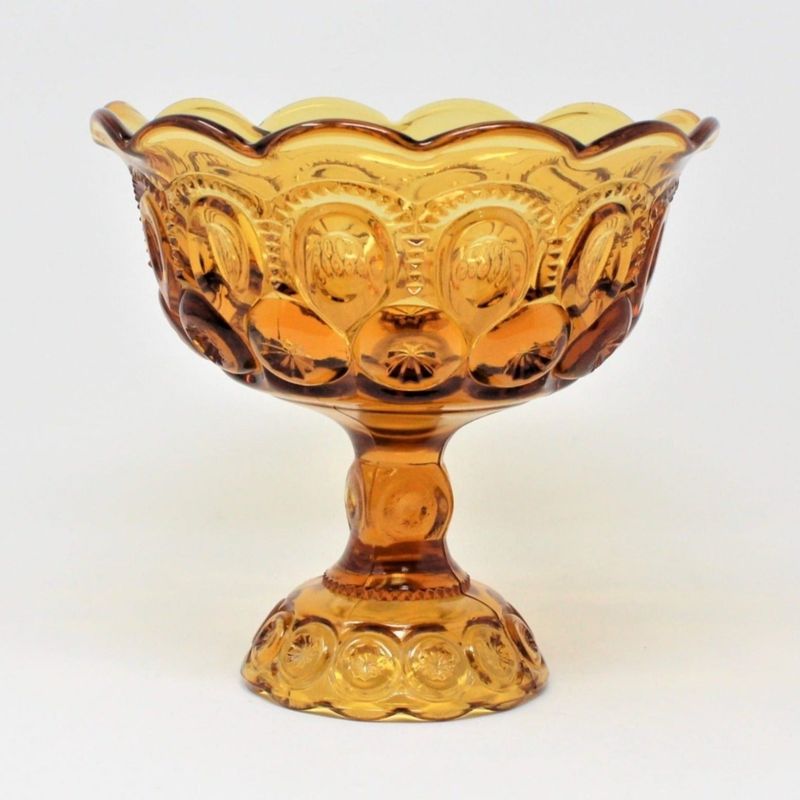
Though technically produced slightly after the Depression era ended, Moon and Stars has become associated with depression glass collecting. L.E. Smith Glass Company created this captivating pattern featuring raised stars and moons against textured backgrounds, primarily in that gorgeous amber color.
Availability remains high because production continued longer than most depression patterns. Small bowls typically sell for $15-25, while larger serving pieces might fetch $40-75 depending on condition.
What makes Moon and Stars special is its tactile quality run your fingers over those raised stars and you’ll understand the appeal! Many families cherished these pieces, passing them through generations, which explains why so many survive in excellent condition compared to other patterns from similar eras.
6. Hobnail – The Affordable Bubble Pattern
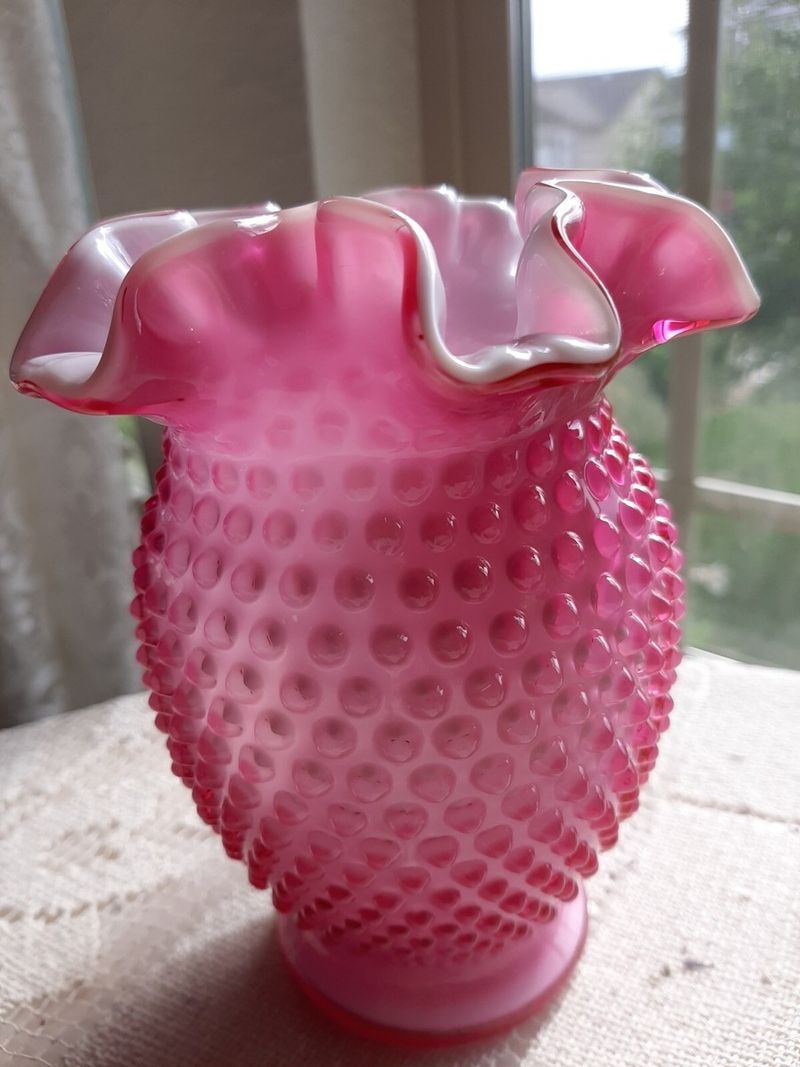
Hobnail’s distinctive raised dot pattern creates a fascinating tactile experience that collectors simply can’t resist! Fenton Art Glass Company produced these pieces in various colors, though the green and pink versions remain most prevalent at today’s antique markets.
I frequently spot Hobnail pieces at estate sales priced between $10-30 for smaller items. The pattern’s widespread availability makes it perfect for new collectors just starting their depression glass journey.
Those characteristic raised bumps served a practical purpose they helped disguise manufacturing flaws in inexpensive glass while creating an elegant appearance. Smart design thinking! Many modern reproductions exist, so check for subtle color differences and manufacturing marks before purchasing if authenticity matters to your collection goals.
7. Petalware – The Elusive Flower Design
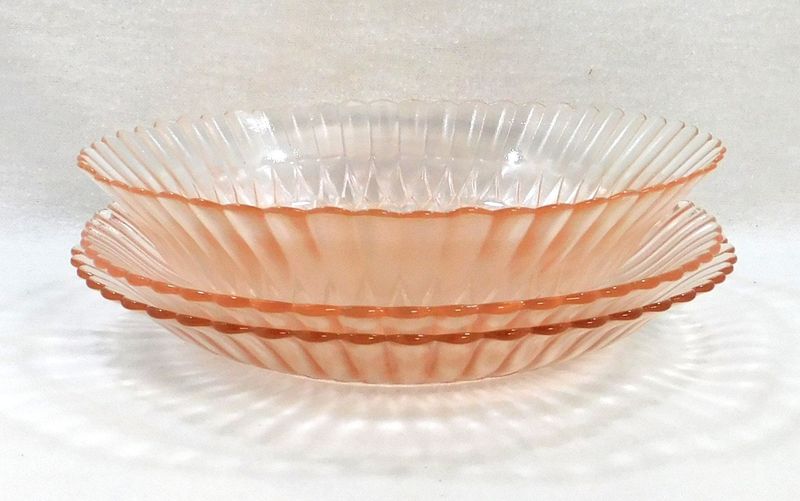
MacBeth-Evans created Petalware with delicate petal-shaped edges that exemplify Depression-era glass artistry at its finest. The pattern’s rarity stems from its limited production run between 1930-1934, making complete sets almost impossible to find today.
Serious collectors might spend years hunting certain Petalware pieces. Individual dinner plates can command $75-125, while rare serving pieces might fetch several hundred dollars at specialized auctions.
The pattern’s distinctive floral-inspired edge required precise manufacturing techniques that proved challenging during mass production. This explains both its scarcity and higher-than-average defect rate. When examining potential purchases, always check those delicate edges for chips even tiny imperfections significantly impact value in this sought-after pattern.
8. Rare Lace Edge – The Collector’s Ultimate Prize

Few patterns generate as much excitement among serious collectors as Rare Lace Edge by Imperial Glass Company. Produced for just 18 months between 1932-1933, these pieces feature incredibly detailed lace-like patterns along their edges that required exceptional craftsmanship.
The limited production run explains why finding these pieces feels like winning the lottery! Dinner plates regularly sell for $150-250, while exceptional serving pieces can command $500+ at specialized auctions.
Imperial Glass discontinued the pattern quickly because those intricate edges proved too fragile for everyday use – many pieces broke during normal handling. This manufacturing challenge contributes to today’s scarcity. When authenticating potential purchases, examine the glass quality closely – the genuine article has exceptional clarity despite its age.
9. Banded Flute – The Mysterious Missing Pattern
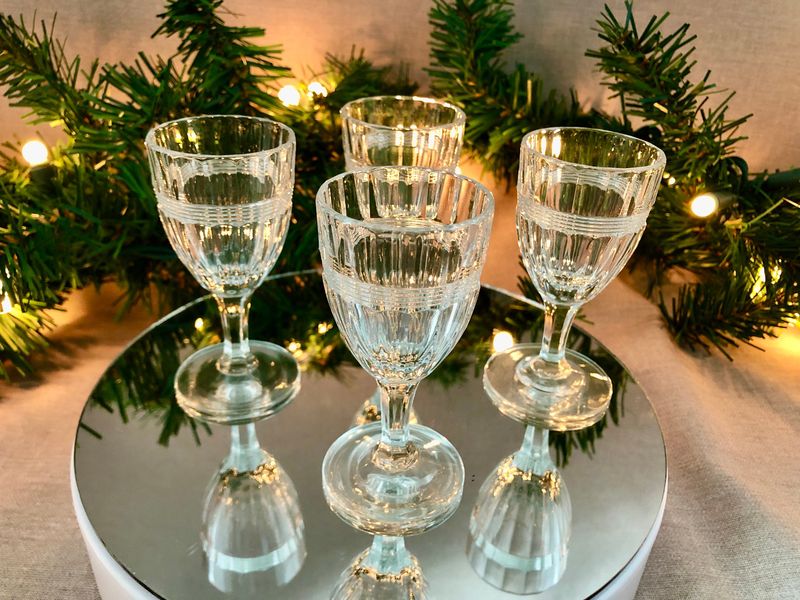
Heisey Glass Company created Banded Flute during a brief production window between 1931-1933, making it one of the most challenging depression patterns to locate today. The elegant design features vertical fluted panels with distinctive horizontal bands a sophisticated departure from more common floral patterns.
Auction houses might go years without seeing certain Banded Flute pieces. When they do appear, dinner plates often fetch $200-350, while rare serving pieces can sell for $500-1,000 depending on condition and provenance.
Heisey’s factory records indicate larger production numbers than what survives today, suggesting many pieces were lost or broken over decades. The pattern’s elegant simplicity means it sometimes gets misidentified as other manufacturers’ work, so always verify authenticity through reference books or expert consultation before making significant investments.
10. Cameo – The Pattern That Disappeared
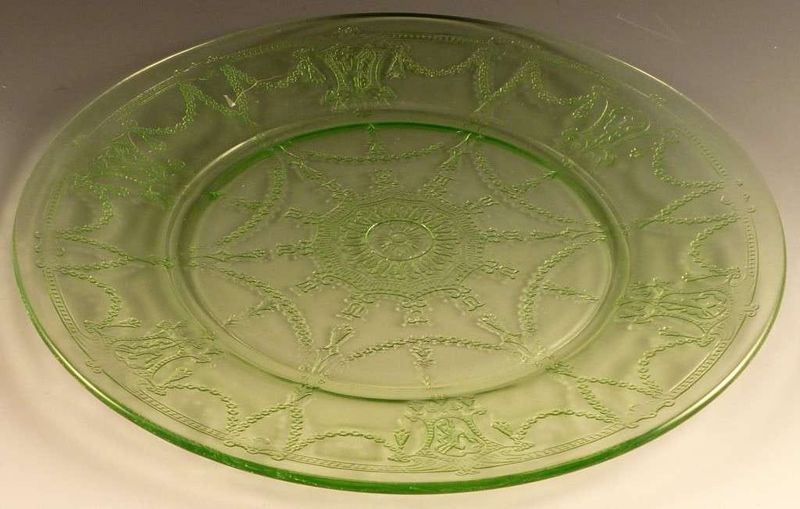
Hocking Glass Company’s Cameo pattern represents the ultimate depression glass mystery. Produced for less than a year in 1930, these pieces feature delicate raised medallions reminiscent of cameo jewelry hence the name.
The pattern’s extremely limited production run explains why finding authentic pieces feels nearly impossible today. When they do surface, dinner plates might command $300-500, while serving pieces can sell for $800-1,200 at specialized auctions.
Why did production end so abruptly? Glass historians believe the intricate molds required for those raised medallions proved too expensive to maintain during economic hardship. Reproductions exist, so always check for subtle differences in glass clarity and mold seams when authenticating potential purchases genuine Cameo has distinctive mold marks that experts can identify.
11. Coastal – The Seaside Rarity Few Have Seen

Federal Glass Company’s Coastal pattern remains shrouded in mystery even among seasoned collectors. Produced for approximately 14 months between 1934-1935, these pieces feature delicate seashell and wave motifs that capture Depression-era Americans’ dreams of seaside vacations few could afford.
The pattern’s extreme rarity means most collectors have never seen authentic pieces outside museum collections. When they occasionally appear at specialized auctions, dinner plates might sell for $400-600, while serving pieces can command $1,000+.
Federal Glass apparently discontinued the pattern due to manufacturing difficulties those detailed seashell designs required precision molds that proved challenging to maintain. Many alleged Coastal pieces are actually misidentified similar patterns, so always consult reference guides or experts before making significant investments in this ultra-rare depression glass treasure.
12. Mandolin – The Musical Mystery Pattern
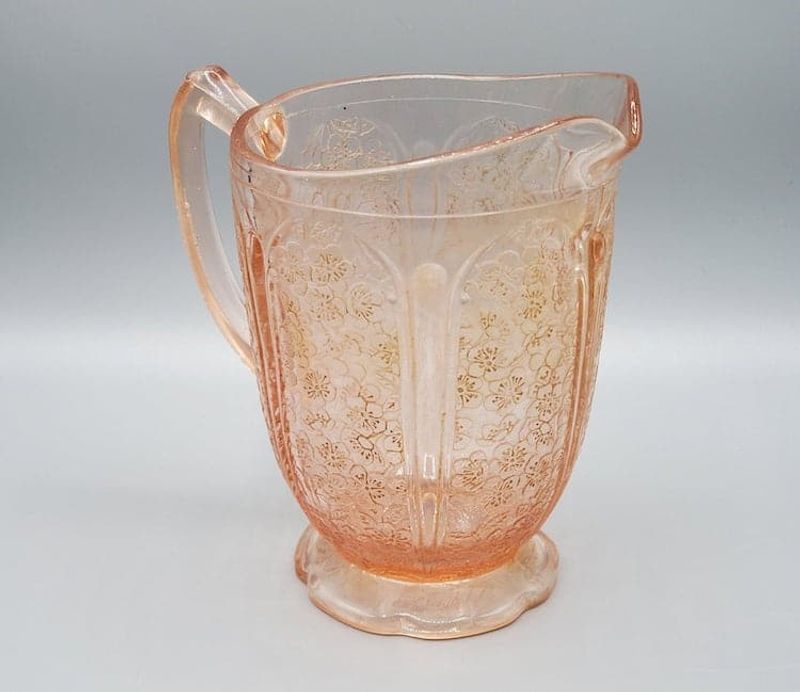
Jeannette Glass Company created Mandolin pattern for less than a year in 1931, making it among the rarest depression glass designs. The pattern features musical instrument motifs including you guessed it mandolins, along with other stringed instruments delicately etched into the glass surface.
Finding authentic Mandolin pieces requires exceptional patience and deep pockets. Dinner plates might sell for $500-700 when they rarely appear, while serving pieces can fetch $1,200+ at specialized auctions.
Production records suggest the pattern didn’t connect with Depression-era consumers, explaining its quick discontinuation. The musical theme represented a significant departure from more popular floral designs of the era. When authenticating potential purchases, examine the etched details carefully – genuine Mandolin has exceptionally precise instrument designs that reproduction pieces rarely capture accurately.
13. Hobnail – The Bubble-Textured Treasure
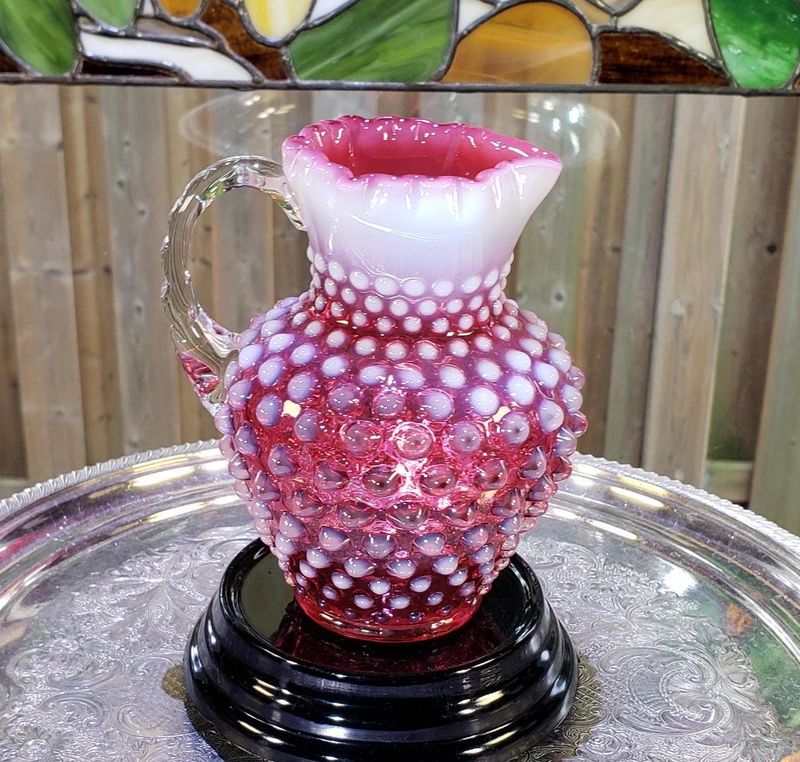
Fenton Art Glass Company created Hobnail with its distinctive raised-dot texture that makes these pieces instantly recognizable by touch alone! The pattern’s popularity stems from both visual appeal and practical design those raised dots helped disguise minor flaws in inexpensive glass.
While not the rarest depression pattern, certain Hobnail pieces remain challenging to locate. Dinner plates typically sell for $25-45, while unusual serving pieces might command $75-125 depending on color and condition.
Fenton produced Hobnail in several colors, with green and pink being most common. The pattern’s tactile quality explains its enduring popularity there’s something deeply satisfying about running your fingers across those perfect raised bubbles! Many modern reproductions exist, so always check for subtle color differences and manufacturing marks when building an authentic collection.

